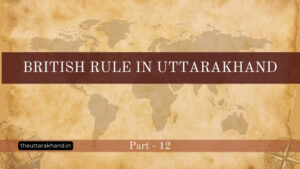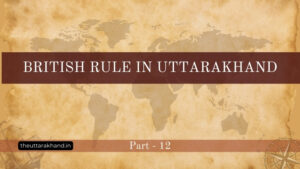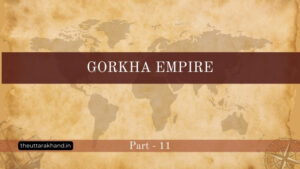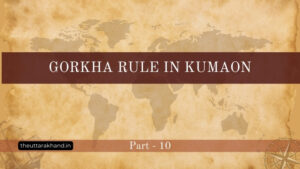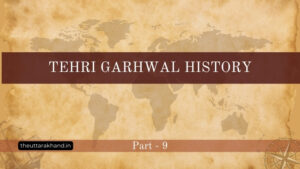Tehri Garhwal History
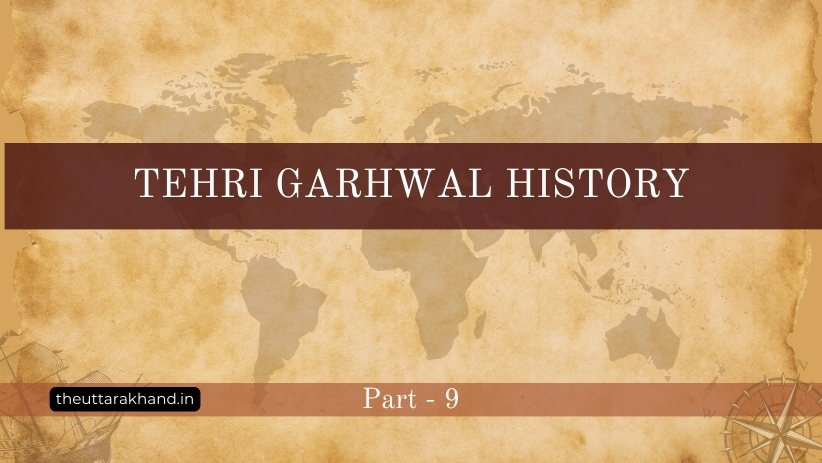
Tehri Garhwal History
Table of contents
I. Introduction to Tehri Garhwal History
Tehri Garhwal, a former princely state located in present-day Uttarakhand, India, has a rich and fascinating history dating back thousands of years. With its stunning natural beauty and strategic location, Tehri Garhwal played a significant role in the region’s politics and culture throughout its existence.
Located in the western Himalayas, Tehri Garhwal covers an area of approximately 13,000 square kilometers and includes several rivers, including the Bhagirathi, Alaknanda, and Yamuna. Its capital, Tehri, sits at an elevation of over 1,500 meters above sea level and offers breathtaking views of the surrounding mountains.
Historically, Tehri Garhwal was part of the ancient kingdom of Kamrupa, which later became known as Kurukshetra. It is believed that the Pandavas, heroes of the Hindu epic Mahabharata, spent some time in the region during their exile.
II. Early History
The early history of Tehri Garhwal can be divided into two periods: the ancient period and the medieval period.
Ancient Period:
During the ancient period, Tehri Garhwal was inhabited by various tribes, including the Khasas, Kiratas, and Nishadas. These tribes were known for their martial skills and often engaged in battles against each other for control of the region.
In the fourth century BC, the Maurya Empire expanded into the region, bringing Buddhism and centralized administration. However, the empire soon collapsed due to internal strife and invasions from neighboring states.
After the fall of the Mauryan Empire, Tehri Garhwal came under the rule of various regional powers, including the Guptas, Rajputs, and Chandelas. During this time, the region saw the development of Hinduism and the construction of numerous temples dedicated to various deities.
Medieval Period:
The medieval period saw the rise of Muslim invaders, who began conquering large parts of northern India. Tehri Garhwal was no exception, and the region fell under the control of various Muslim sultanates, including the Delhi Sultanate and the Mughals.
However, the influence of Islam never fully took hold in Tehri Garhwal, and Hinduism remained the dominant religion. Despite being ruled by foreign powers, the people of Tehri Garhwal maintained their cultural identity and continued to practice their traditional customs and rituals.
Formation of the Princely State of Tehri Garhwal:
In the mid-18th century, the Gorkha Kingdom, based in Nepal, began expanding eastward towards Tehri Garhwal. Led by King Prithivi Narayan Shah, the Gorkhas conquered much of modern-day Nepal before turning their attention to Tehri Garhwal.
The ruling dynasty of Tehri Garhwal, the Panwar Rajputs, put up fierce resistance but ultimately failed to repel the Gorkha invasion. In 1804, the last Panwar ruler, Sudarshan Shah, signed a treaty with the East India Company, ceding control of Tehri Garhwal to them.
Under British rule, Tehri Garhwal became a princely state, governed by local leaders appointed by the British. While nominally independent, the princely states were subject to British oversight and intervention in their affairs.
Despite being under British rule, the people of Tehri Garhwal continued to maintain their unique cultural identity and traditions. Many social reform movements emerged during this period, aimed at improving the lives of women, Dalits, and other marginalized communities.
One notable figure from this era was Swami Ramtirth, a spiritual leader and social reformer who advocated for vegetarianism, non-violence, and women’s empowerment. Born in 1873 in Punjab, Ramtirth settled in Tehri Garhwal and established several schools and ashrams promoting his teachings.
Today, Tehri Garhwal remains a vibrant and culturally rich region, with a proud history stretching back thousands of years. Despite facing numerous challenges, including political instability, environmental degradation, and economic uncertainty, the people of Tehri Garhwal have managed to preserve their heritage and continue to thrive.
III. RULERS OF TEHRI GARHWAL
Tehri Garhwal has been ruled by a number of dynamic personalities since its formation. Some of them contributed significantly to the development of the state and its society. Let us look at the list of rulers and their notable achievements and contributions.
LIST OF RULERS
- Sudarshan Shah (1716-1772): The founder of Tehri Garhwal, Sudarshan Shah, laid the foundation of the state and defeated the Gorkhas who were threatening the region. He shifted the capital from Deoprayag to Tehri.
- Amar Singh Thapa (1772-1804): Son of Sudarshan Shah, Amar Singh Thapa, fought bravely against the Gorkhas and saved the region from their clutches. He expanded the territory of Tehri Garhwal and constructed several forts and palaces.
- Pratap Singh Shah (1804-1839): Grandson of Amar Singh Thapa, Pratap Singh Shah, ascended the throne at the age of six. During his reign, several educational institutions were established, and the judicial system was improved. He introduced postage stamps and currency notes in the state.
- Manabendra Shah (1859-1887): Son of Rudrapratap Shah, Manabendra Shah, abolished sati and child marriages, and encouraged widow remarriage. He opened several schools and hospitals and developed infrastructure like roads and bridges.
- Narendra Shah (1913-1946): Grandson of Manabendra Shah, Narendra Shah, was a visionary leader who initiated several development projects. He introduced electricity, telephones, and radio services in the state. He also established the Bank of Tehri Garhwal and created job opportunities for the locals.
NOTABLE ACHIEVEMENTS AND CONTRIBUTIONS
The rulers of Tehri Garhwal have left behind a rich legacy of achievements and contributions. They focused on developing infrastructure, education, healthcare, and agriculture. Let us take a closer look at their contributions.
- Development of Infrastructure: The kings of Tehri Garhwal paid special attention to building roads, bridges, and other infrastructure facilities. Pratap Singh Shah constructed a road connecting Tehri to Mussoorie, which facilitated trade and commerce. Manabendra Shah built several irrigation channels and dams to promote agriculture.
- Education: Several schools and colleges were established during the reign of the Tehri Garhwal kings. Pratap Singh Shah established the first high school in Tehri in 1886. Manabendra Shah introduced compulsory primary education and opened several girls’ schools.
- Healthcare: To improve the health of the citizens, the kings established several hospitals and clinics. They also launched vaccination programs and provided free medical care to the poor.
- Agriculture: Agriculture was given priority during the reign of the Tehri Garhwal kings. Irrigation systems were developed, and seeds of superior quality were distributed among farmers. They also encouraged terrace cultivation to increase agricultural productivity.
- Judiciary: The judicial system was strengthened during the reign of the Tehri Garhwal kings. Courts were set up, and laws were codified. Justice was delivered promptly and impartially.
- Art and Literature: Patronage of art and literature was an essential aspect of the culture of Tehri Garhwal. Kings supported poets, musicians, and artists. They commissioned several works of art and sponsored literary activities.
IV. SOCIETY AND CULTURE
SOCIAL STRUCTURE
The social structure of Tehri Garhwal was hierarchical, with the royal family occupying the top position. Below them were the nobles and landlords, followed by the peasants and laborers. Castes and communities were well defined, and inter-caste marriages were rare.
FESTIVALS AND TRADITIONS
Tehri Garhwal is famous for its colorful festivals and traditions. Some of the popular festivals include Diwali, Navratri, Olgi, Harela, Phool Dei, and Badri Kedar. Each festival has its significance and is celebrated with great enthusiasm and fervor. Traditional dances like Langvir Nritya, Jhora Nach, Chholiya, and Barada Nati are performed during festive occasions.
ART AND LITERATURE
Tehri Garhwal has a rich tradition of folk music and dance. Folk songs, sung in the local dialect, express love, devotion, heroism, and patriotism. The musical instruments commonly used in folk music are the dhol, damau, bina, and ransingha.
Literature in Tehri Garhwal includes both oral and written forms. Oral literature consists of folktales, legends, myths, and ballads passed down through generations. Written literature includes poetry, novels, plays, and essays written in Hindi, Urdu, and Garhwali languages.
V. Administration and Economy
The administrative system of Tehri Garhwal was highly efficient and effective. The state was divided into different circles, tehsils, and villages, each headed by a circle officer, tehsildar, and patwari respectively. There was a clear chain of command, and decisions were taken collectively by the council of ministers.
The revenue sources of Tehri Garhwal included taxes collected from land, forests, mines, and trade. Land tax was the most significant source of revenue, accounting for nearly 80% of the total income. Forestry and mining were also crucial revenue generators, contributing around 10% and 5%, respectively. The remaining 5% came from trade and commerce.
Trade and commerce flourished in Tehri Garhwal, thanks to its favorable location on the banks of the river Ganges. Goods traded included grains, fruits, vegetables, textiles, metals, and precious stones. The state had well-developed markets and trading centers, attracting merchants from far and wide.
VI. Relations with British India
Political relations
Before the advent of the British, Tehri Garhwal enjoyed friendly ties with the neighboring states of Garhwal and Kumaon. However, things changed when the British arrived in India and gradually extended their dominion over the country.
Initially, the relationship between Tehri Garhwal and British India was cordial, with the latter recognizing the sovereignty of the former. However, tensions arose when the British tried to assert their authority over the hill states, leading to frequent conflicts and skirmishes.
Role in Indian independence movement
Tehri Garhwal played a vital role in the Indian independence movement. The region witnessed widespread protests and demonstrations against the British, led by prominent freedom fighters such as Veer Savarkar, Subhash Chandra Bose, and Mahatma Gandhi.
Many young men from Tehri Garhwal joined the Indian National Congress and participated in various nationalist activities. Some even sacrificed their lives for the cause of independence, inspiring others to follow suit.
Merger into Uttar Pradesh
After India gained independence in 1947, the princely states were integrated into the newly formed Indian Union. Tehri Garhwal too merged with Uttar Pradesh, losing its status as a separate entity.
While the merger brought many benefits, such as access to resources and technology, it also resulted in the loss of autonomy and cultural identity. Over the years, efforts have been made to revive the traditional arts, crafts, and festivals of Tehri Garhwal, keeping alive its rich heritage and legacy.
Conclusion
Tehri Garhwal, the erstwhile princely state, boasts a rich and varied history, marked by strong leadership, cultural diversity, and economic prosperity. From its ancient roots to its integration into Uttar Pradesh, the region has seen many changes and transformations. Yet, it has retained its distinct character and uniqueness, making it a cherished treasure trove of Indian history and heritage.
With its scenic landscapes, picturesque valleys, and towering peaks, Tehri Garhwal continues to enthrall tourists and adventure enthusiasts alike. Its historical monuments, museums, and cultural events showcase the glorious past of the region, offering insights into its evolution and growth. As we move forward, let us strive to preserve and protect the legacy of Tehri Garhwal, ensuring its survival and sustenance for generations to come.
Tehri Garhwal History :
- What is the history of Tehri Garhwal?
A: Tehri Garhwal has a rich history dating back to ancient times, with various rulers and societies shaping its culture and traditions. - Who were the rulers of Tehri Garhwal?
A: Tehri Garhwal was ruled by the Panwar dynasty, whose notable rulers include Sudarshan Shah, Pratap Shah, and Narendra Shah. - How did Tehri Garhwal contribute to Indian independence?
A: Tehri Garhwal played a vital role in the Indian independence movement, with many young men joining the Indian National Congress and participating in nationalist activities. - When did Tehri Garhwal merge with Uttar Pradesh?
A: Tehri Garhwal merged with Uttar Pradesh after India gained independence in 1947.

